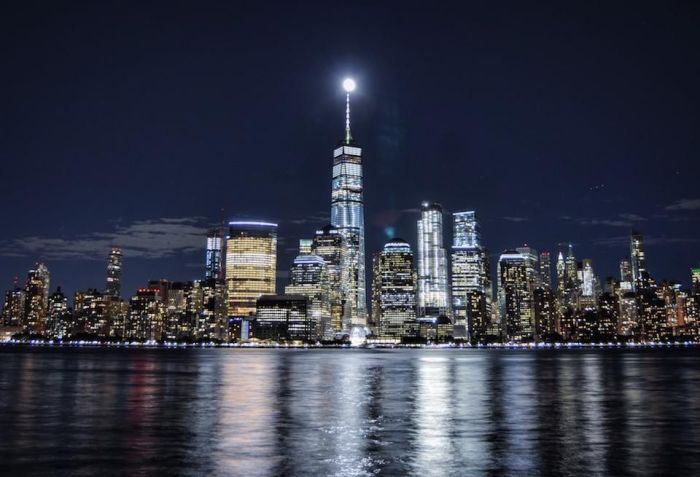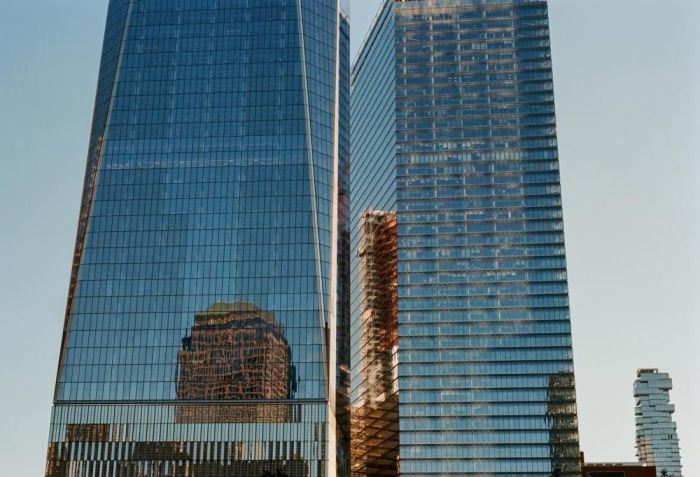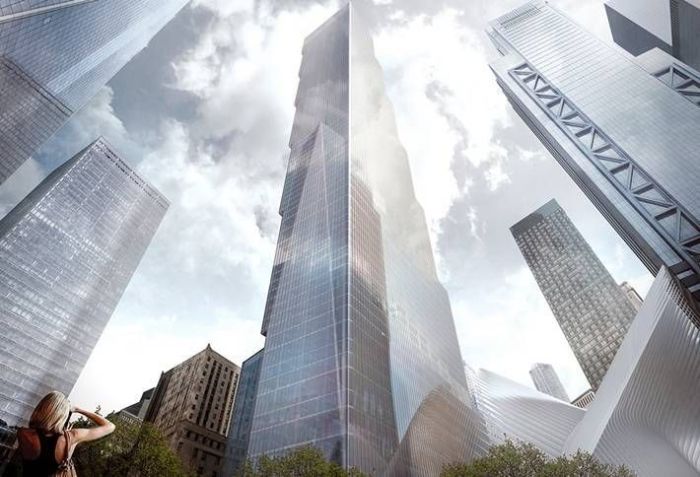Seventeen years ago, Lower Manhattan was hit with the deadliest attack on U.S. soil in history, one that has left permanent emotional and physical scars on New York City and its inhabitants; on Monday, the subway stop that was destroyed in the attacks finally reopened.
Despite the wreckage of that day, the World Trade Center has been almost entirely rebuilt, and the area has transformed from an office-only mecca to a vibrant neighborhood where New Yorkers work, shop and live.

The Twin Towers
The two, 110-story towers that were directly hit by the planes collapsed Sept. 11, 2001, after their structures were compromised by the white-hot jet fuel that ignited on impact. In their place today is a somber memorial: two large holes in the ground, turned into fountains inscribed with the names of the victims of the attack. The memorial was among the first pieces of the modern site to be completed, and the visually arresting reminder of what once stood above the foundations are the centerpiece from which the modern complex spreads. When the Twin Towers originally opened in 1973, architect Minoru Yamasaki delivered remarks that still echo today when one walks through the complex, which also includes the 9/11 Memorial Museum.
“The World Trade Center is a living symbol of man’s dedication to world peace,” Yamasaki said at the opening. “Beyond the compelling need to make this a monument to world peace, the World Trade Center should, because of its importance, become a representation of man’s belief in humanity, his need for individual dignity, his belief in the cooperation of men, and through this cooperation, his ability to find greatness.”
The rest of the site was redeveloped with a new urban plan, starting with the 1,776-foot-tall Freedom Tower, as it was called in the plans, now known by the same name as one of the Twin Towers: One World Trade Center.

Bisnow: Andrew Nathanson
The tallest building in the country, One World Trade Center looms over Lower Manhattan.
One World Trade Center
This office building was developed by The Durst Organization, a longtime family-run firm, in partnership with the Port Authority of New York and New Jersey, which owns the land of the entire World Trade Center complex. Completed in 2014 and designed by Skidmore, Owings & Merrill, the 3M SF of office space is still about 25% vacant, and Condé Nast recently put more than 300K SF of its space in the building on the sublease market. Durst, which owns 5% of the building but manages it on behalf of the joint venture, isn’t feeling too much pressure to fill the remaining space, however — just last week, the landlord turned down a 220K SF lease with WeWork in the building, claiming it had other, more appealing tenants for the space, the Wall Street Journal reported.

Flickr/Glenn Beltz
One World Trade Center and Seven World Trade Center in Lower Manhattan
Seven World Trade Center
The first building to be completed in the new complex, 7 World Trade Center — also designed by SOM’s David Childs — opened in May 2006. Developer Larry Silverstein signed a ground lease with the Port Authority to control the development of the complex months before the planes hit, and the building showed his, and the area’s, ability to rebuild in the wake of the attacks. Today, the building is fully leased, including to Silverstein Properties, which is headquartered there. It is the shortest building in the official complex, and was designed in deference to the supertalls that came after. Building 7 in the old complex was destroyed by a raging, uncontrolled fire the same day as the Twin Towers fell, but for years was the topic of conspiracy theorists considering it was a block away from the site of the attack. A final report by the National Institute of Standards and Technology, issued last year, conclusively rebuts the theory that the government blew up the 43-story Building 7. Bisnow: Andrew Nathanson 3 and 4 World Trade Center in Lower Manhattan Four World Trade Center The second building in the complex to open up, 4 World Trade Center opened less than a year before its taller sibling, 1WTC, but it is already fully leased. Music-streaming giant Spotify leased up the rest of its office space, more than 450K SF, last year. The building is home to 150K SF of retail space, managed, like all other retail in the WTC complex, by Westfield. It is home to the Swatch store and a “food emporium” dubbed Market Lane that is scheduled to open in the fall. People entered the original Mall at the World Trade Center through Building 4 before debris and fire destroyed it, although it didn’t collapse. When it stood, it was home to the longest trading floors in the world, where “Trading Places” was filmed. It was demolished amid the rebuilding of the site, and Silverstein developed this tower and its next-door neighbor.
Three World Trade Center
This 1,000-foot tower opened most recently, holding a ceremonial ribbon-cutting in June.
“When our city was attacked on 9/11, our collective response was, and our civic responsibility went far beyond, rebuilding what we had lost … We were also charged with creating a more vibrant and connected neighborhood than any that had ever existed here before,” Silverstein Properties Chairman Larry Silverstein said at the event.
Sixty percent of the office space in the building is still available, and CBRE Tri-State CEO Mary Ann Tighe is leading the efforts to fill the rest of the space in the 2.5M SF tower.
3 World Trade Center World Financial Center
These buildings, which housed the glass-enclosed Winter Garden, were heavily damaged after the Twin Towers fell, but unlike their predecessors on this list, they were able to be repaired. Brookfield Property Group renovated and rebranded the complex as Brookfield Place, adding retail that is now connected to the World Trade Center through underground connectors to the Oculus train station. The buildings are now home to the headquarters of J. Crew and the Royal Bank of Canada.
World Trade Center Oculus Mall PATH Station
The World Trade Center’s old train station was nothing to write home about, but plenty has been written about what replaced it. The Oculus, a skeletal landmark that cost $4B to build, houses the majority of the retail space in the center and transit connections to New Jersey and all over New York City. Despite the building’s hefty price tag, it has been beset by issues large and small. A leaky roof that briefly closed part of the mall may grab headlines, but the larger issue of retail industry upheaval has loomed over the mall as New York’s vacancy rate climbs.

Silverstein Properties A rendering of Silverstein Properties’ 2 World Trade Center, designed by Bjarke Ingels Group
Two World Trade Center
The final piece of the puzzle, this tower’s Bjarke Ingels design is waiting on a company to sign a lease before it can be realized. News Corp. had once committed to opening in the building, but instead decided in 2016 that it would rather renovate its previous offices on Sixth Avenue than follow Condé Nast to the center.
No comments:
Post a Comment